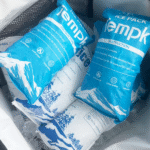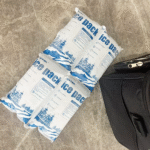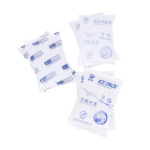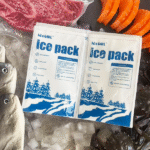Pack of 100 Dry Ice Packs: How to Ship Smarter in 2025
If you’re scaling frozen or ultra-cold shipping, a pack of 100 dry ice packs helps you standardize pack-outs, control costs, and keep lanes stable across seasons. Updated October 2025, this guide shows you how to size your program, stay compliant, and cut loss rates without sacrificing speed.
-
Sizing rules that turn transit hours into the dry-ice mass you actually need
-
Safety and labeling steps that pass 2025 airline acceptance checks
-
When VIP insulation and PCMs beat dry ice on total cost for your lanes
-
Ways to roll out training and QA that scale with order volume
-
Inventory rhythms and reorder points for a pack of 100 dry ice packs purchase
Why buy a pack of 100 dry ice packs?
-
Consistency: Standardizes dosing across shifts and sites.
-
Speed: Pre-bagged portions cut pack-out time per order.
-
Quality: Uniform refrigerant mass reduces variation.
-
Scalability: Easier to plan weekly rhythms.
When does a pack of 100 dry ice packs make sense?
Choose a pack of 100 dry ice packs when you ship frozen goods daily and need repeatable, fast pack-outs at sub-zero set points.
You gain predictability because every portion is identical, helping new staff follow SOPs and reducing re-packs. High-quality packs hold sub-zero temperatures for about 24–72 hours depending on insulation quality. Reusable packs survive up to 30 cycles with careful handling, saving budget while raising service levels.
Blocks, pellets, or pre-bagged portions?
| Format | Best for | Workflow fit | What it means for you |
|---|---|---|---|
| Blocks/Slabs | Long duration lanes | Fewer pieces | Slower sublimation |
| Pellets/Nuggets | Fast pull-down | Flexible dosing | Faster sublimation |
| Pre-bagged portions | Repeatable pack-outs | Time-saving | Consistent QA |
Material options
| Pack type | Cooling duration | Weight | Best use case |
|---|---|---|---|
| HDPE shell pack | 48–72 h | Light | Long-distance pharma |
| Gel-based PCM pack | 24–48 h | Moderate | Meal kits |
| Bio-based reusable pack | 36–60 h | Medium | Sustainable operations |
Practical tips
-
Multi-day transit: Blend ~80% blocks + ~20% pellets.
-
Cleaner pack-outs: Bag pellets to reduce CO₂ “snow.”
-
Reuse: Track cycles and retire damaged packs.
Case study: A dessert brand cut returns by half after switching to pre-bagged portions. Pack time fell by 30 seconds per order.
How much dry ice should you use?
Plan 5–10 lb of dry ice per 24 h of transit inside an insulated shipper; add one day for delays.
For 40 frozen orders/day and two-day lanes, you need roughly 560 lb daily. A pack of 100 × 5-lb portions covers 500 lb, so order two weekly to maintain inventory.
Quick estimator
Safe and compliant packaging
Vent every container, label UN 1845, and train staff on PPE and CO₂ safety.
Dry ice releases gas that displaces oxygen—vent lids, post signage, and monitor storage rooms.
| Safety focus | What to do | Why it matters |
|---|---|---|
| Ventilation | Use vented lids | Prevents oxygen loss |
| Labeling | Mark UN 1845 + weight | Meets IATA rules |
| Monitoring | Use CO₂ sensors | Ensures safe workspace |
When to switch to PCMs or gels
Use PCMs for tight 2–8 °C control or reusable loops, and reserve dry ice for < −20 °C or fast pull-down.
PCMs simplify paperwork; gel packs suit short local routes. Many 2025 shippers blend −21 °C PCM with dry ice to balance cost and safety.
2025 trends in ultra-cold shipping
Reusable packaging and smarter insulation dominate 2025. Programs adopting VIP shippers cut refrigerant mass by about one-third, while IoT monitoring reduces excursions.
Latest developments
-
VIP + PCM hybrids: Small dry-ice loads ease DG paperwork.
-
Right-sizing: Validated kits reduce ice use 15–30%.
-
CO₂ monitoring: Low-cost sensors now standard.
Frequently asked questions
Can I fly with dry ice?
Yes—use vented packaging, mark UN 1845 and net weight, and follow IATA rules.
How should I store it?
Keep in a cool, ventilated room with loose lids. Never in a sealed freezer.
How long will it last?
Expect 5–10 lb to sublimate every 24 h; premium insulation lowers the rate.
Will it damage packaging?
Extreme cold can make thin plastics brittle—add a liner and avoid direct contact.
Is “dry ice pack” the same as gel pack?
No. Dry ice is solid CO₂ (−78.5 °C); gels use water-based PCMs for higher temps.
Internal link ideas (for your own site)
-
Validated −80 °C shippers for biologics
-
PCM 2–8 °C pack-out guide
-
Dry-ice safety checklist
-
Frozen pack-out SOP template
Summary and advice
Choose a pack of 100 dry ice packs to standardize frozen shipping, follow the 5–10 lb/24 h rule, and design vented, labeled packaging. Use VIPs or −21 °C PCMs when they reduce cost, and train teams for safe, repeatable pack-outs.
Next step: map your top three lanes, run an A/B test, and finalize your SOP this week.
About Tempk
We engineer and validate cold-chain packaging for food, healthcare, and advanced materials. Our tested kits around a pack of 100 dry ice packs typically reduce dry-ice use by 15–30% while maintaining lane time.
Action: Get a quick consultation to validate your configuration.























